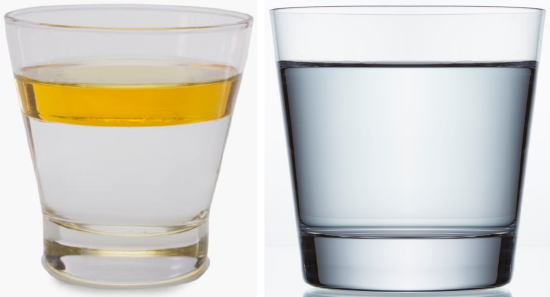7.3: Preparing Solutions
- Page ID
- 221822
\( \newcommand{\vecs}[1]{\overset { \scriptstyle \rightharpoonup} {\mathbf{#1}} } \)
\( \newcommand{\vecd}[1]{\overset{-\!-\!\rightharpoonup}{\vphantom{a}\smash {#1}}} \)
\( \newcommand{\id}{\mathrm{id}}\) \( \newcommand{\Span}{\mathrm{span}}\)
( \newcommand{\kernel}{\mathrm{null}\,}\) \( \newcommand{\range}{\mathrm{range}\,}\)
\( \newcommand{\RealPart}{\mathrm{Re}}\) \( \newcommand{\ImaginaryPart}{\mathrm{Im}}\)
\( \newcommand{\Argument}{\mathrm{Arg}}\) \( \newcommand{\norm}[1]{\| #1 \|}\)
\( \newcommand{\inner}[2]{\langle #1, #2 \rangle}\)
\( \newcommand{\Span}{\mathrm{span}}\)
\( \newcommand{\id}{\mathrm{id}}\)
\( \newcommand{\Span}{\mathrm{span}}\)
\( \newcommand{\kernel}{\mathrm{null}\,}\)
\( \newcommand{\range}{\mathrm{range}\,}\)
\( \newcommand{\RealPart}{\mathrm{Re}}\)
\( \newcommand{\ImaginaryPart}{\mathrm{Im}}\)
\( \newcommand{\Argument}{\mathrm{Arg}}\)
\( \newcommand{\norm}[1]{\| #1 \|}\)
\( \newcommand{\inner}[2]{\langle #1, #2 \rangle}\)
\( \newcommand{\Span}{\mathrm{span}}\) \( \newcommand{\AA}{\unicode[.8,0]{x212B}}\)
\( \newcommand{\vectorA}[1]{\vec{#1}} % arrow\)
\( \newcommand{\vectorAt}[1]{\vec{\text{#1}}} % arrow\)
\( \newcommand{\vectorB}[1]{\overset { \scriptstyle \rightharpoonup} {\mathbf{#1}} } \)
\( \newcommand{\vectorC}[1]{\textbf{#1}} \)
\( \newcommand{\vectorD}[1]{\overrightarrow{#1}} \)
\( \newcommand{\vectorDt}[1]{\overrightarrow{\text{#1}}} \)
\( \newcommand{\vectE}[1]{\overset{-\!-\!\rightharpoonup}{\vphantom{a}\smash{\mathbf {#1}}}} \)
\( \newcommand{\vecs}[1]{\overset { \scriptstyle \rightharpoonup} {\mathbf{#1}} } \)
\( \newcommand{\vecd}[1]{\overset{-\!-\!\rightharpoonup}{\vphantom{a}\smash {#1}}} \)
As stated previously, solutions can be prepared using solvents and solutes in any state-of-matter combination. In order for a solute chemical to be uniformly-distributed throughout a solution at a macro-, or large-scale, level, the individual atoms or molecules of that solute must be dispersed among, and, therefore, occupy the space in between, solvent particles at the molecular level. Recall that gaseous chemicals exist as independent atoms or molecules that are separated by relatively large amounts of "empty" space. As a result, gas-phase solutions form rapidly, because individual solute particles are able to easily move throughout and, ultimately, occupy, the "empty" spaces in between gaseous solvent particles. However, most of the solutions that are of interest to chemists are liquid-phase solutions, which are prepared using liquid solvents. In contrast to gaseous chemicals, no "empty" space is present between liquid particles, because the individual molecules within a liquid must, by definition, maintain physical contact with one another. As a result of this close physical proximity, liquid particles are highly attracted to one another and, consequently, are not easily separated from one another. Therefore, any solute that is utilized to prepare a liquid-phase solution must contain atoms or molecules that are able to overcome these inherent attractive forces and, subsequently, move throughout and occupy the "empty" spaces that are temporarily created during the solvation process.
In order to better understand the molecular-level interactions through which liquid-phase solutions are formed, chemists studied hundreds of unique solvent/solute combinations and concluded that only substances with similar electron distributions were able to successfully interact with one another and form these types of solutions. This result, which is often summarized using the phrase "like dissolves like," explains why certain combinations of chemicals interact and form solutions and others do not. For example, because oil is unable to dissolve in water, these chemicals are immiscible, or insoluble, in one another. As a result, a heterogeneous bilayer, in which oil and water are present as two visually-distinctive liquids, forms when these chemicals are mixed together, as shown below in the first image in Figure \(\PageIndex{1}\). In contrast, the salt water solution that is shown in the second image in Figure \(\PageIndex{1}\) is comprised of a single homogeneous layer, indicating that its constituent chemicals are miscible, or soluble, in one another. No solid salt particles are visible in this liquid-phase solution, which physically resembles the solvent, water, that was used to prepare it.

As stated above, solvation is the process in which solute particles overcome the attractive forces in a liquid solvent and form a solution by occupying the "empty" spaces that are temporarily created. Because no chemicals are specifically-identified within this definition, "solvation" is a generic term that can be used to describe the process through which any solvent is utilized to prepare a homogeneous mixture. As stated in Section 4.12, water is known as the "universal solvent," due to its ability to dissolve more substances than any other chemical. In order to highlight this versatility, an additional term, hydration, is utilized to describe the process of dissolving a solute in water. Because hydration is a specific subcategory of solvation, the process of dissolving a solute in water can be described as a generic solvation or as a hydration. However, if an alternative solvent, such as ethanol, is utilized to dissolve a solute, the corresponding process can only be described as a generic solvation and does not qualify as a hydration, which requires that a solute be dissolved in water.

